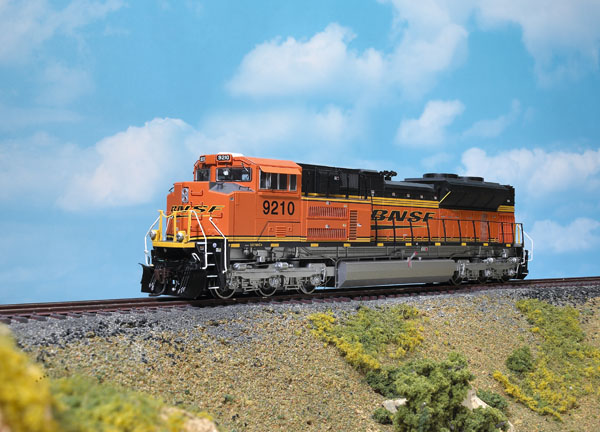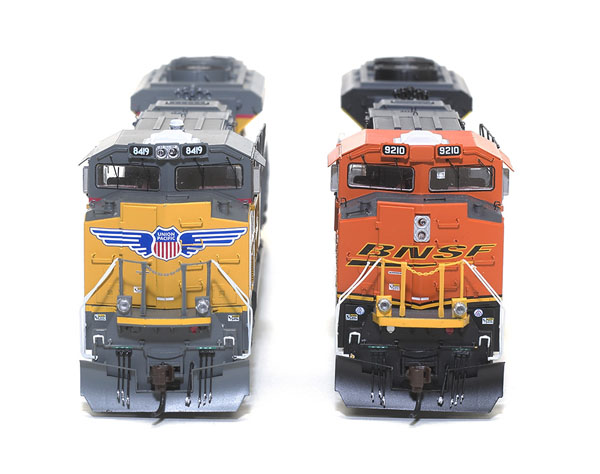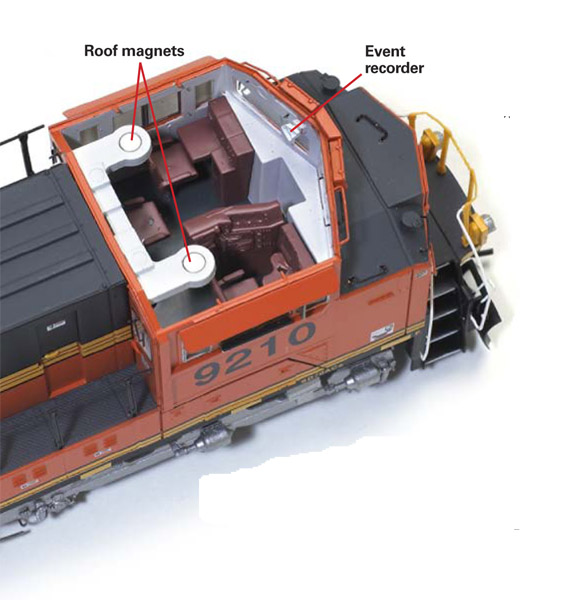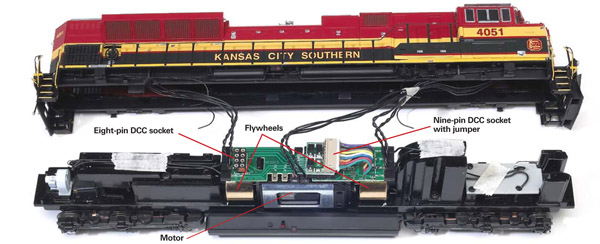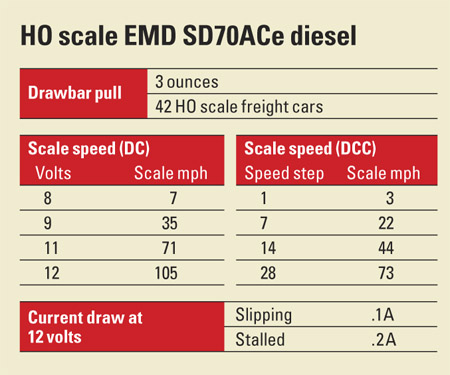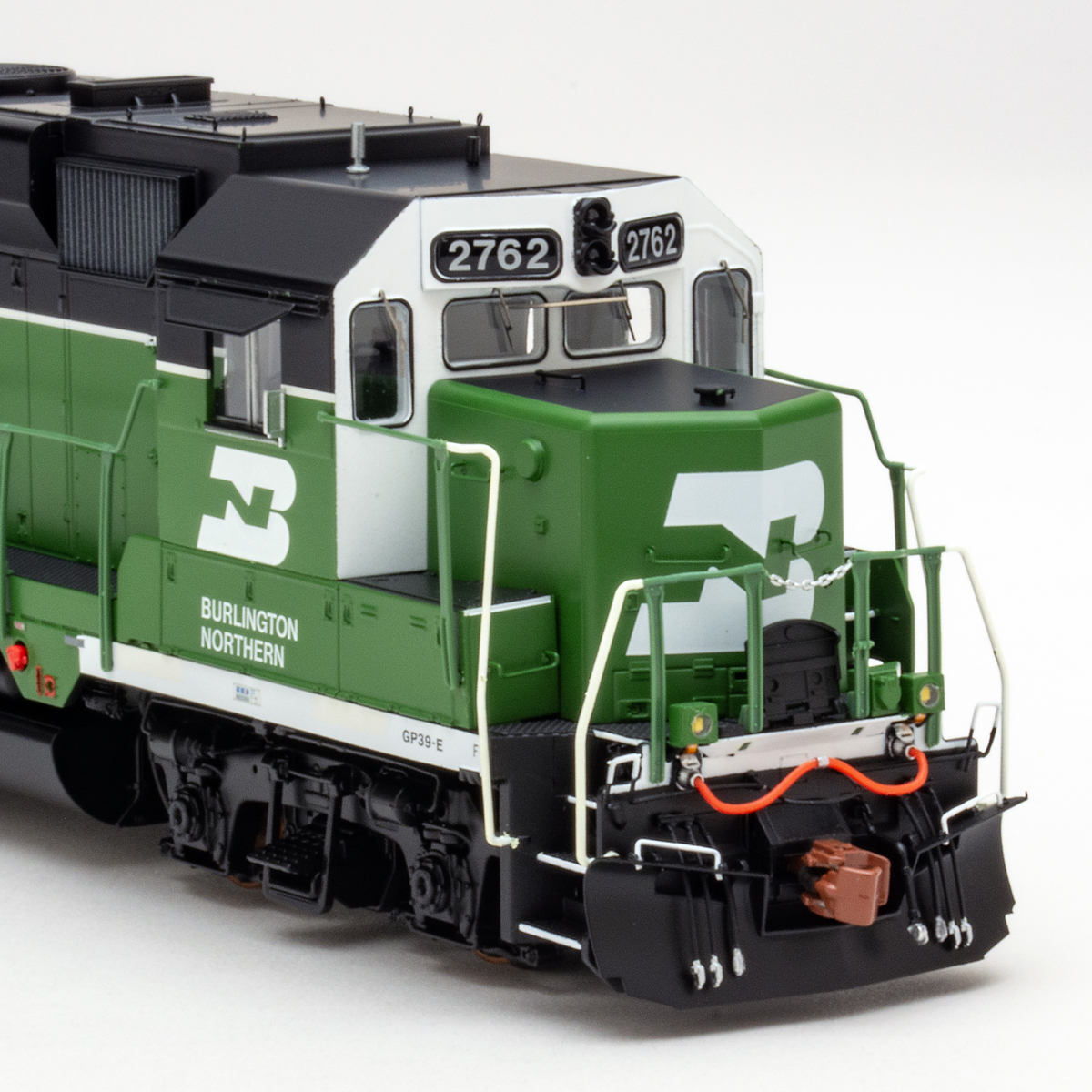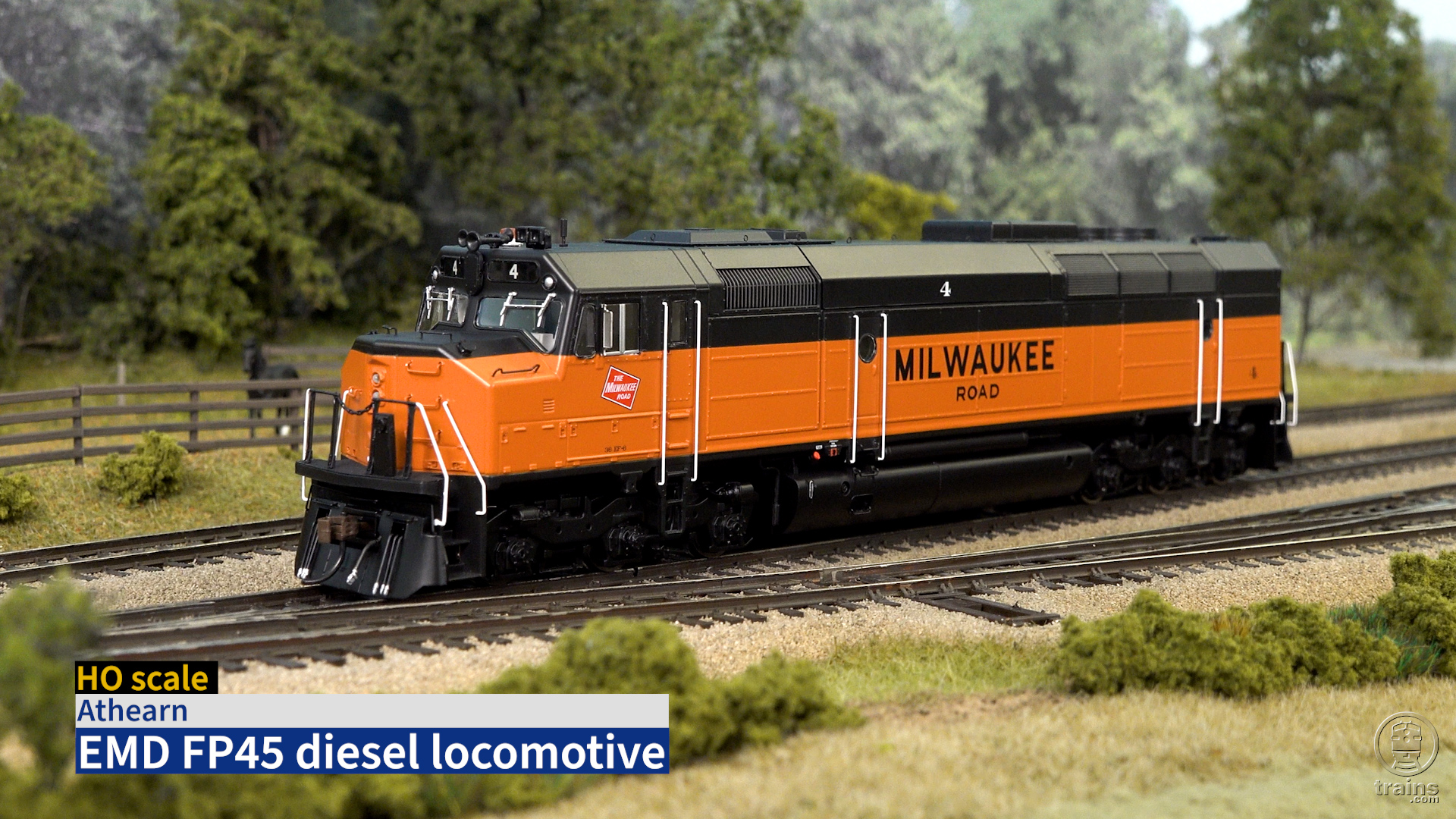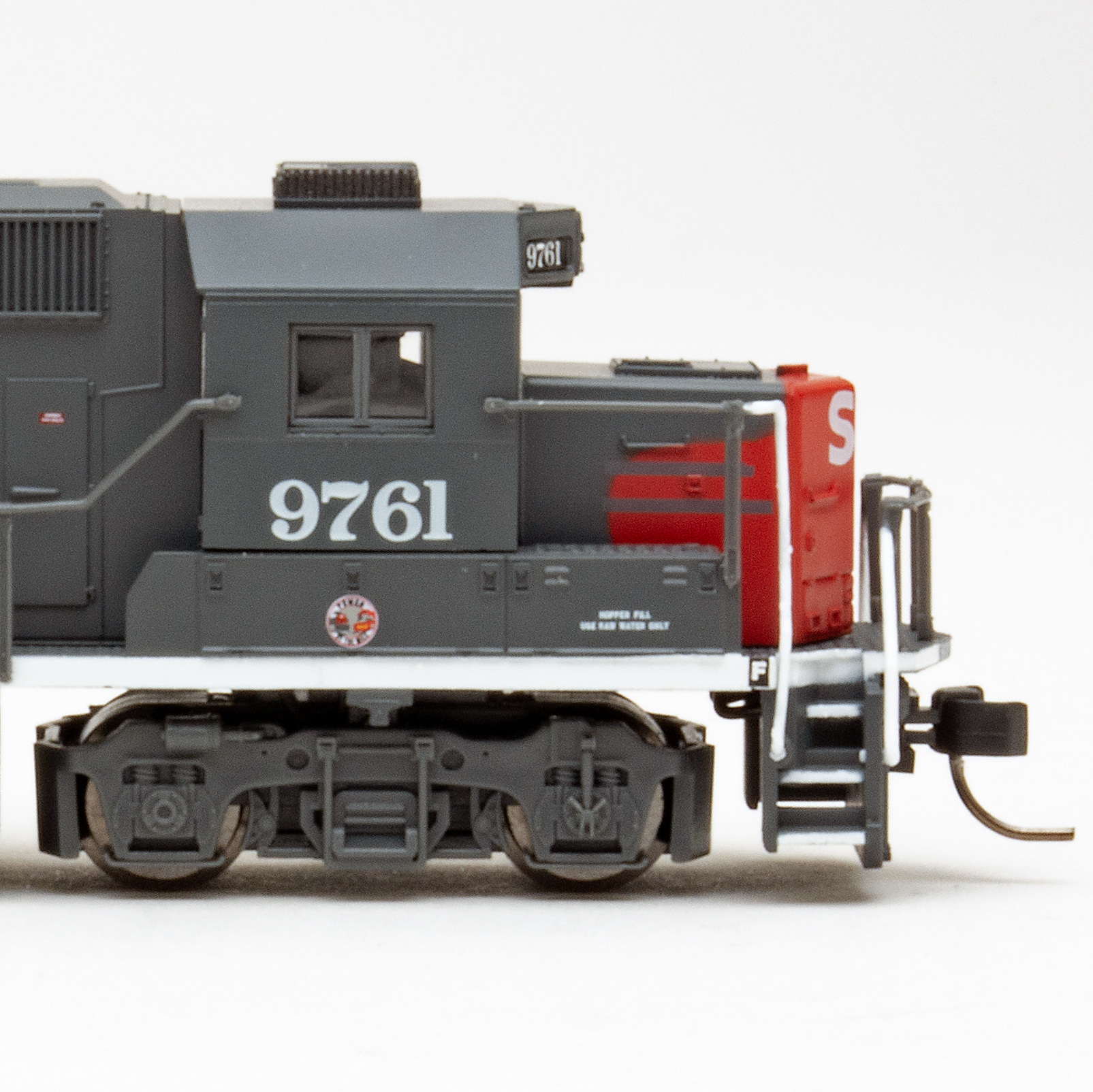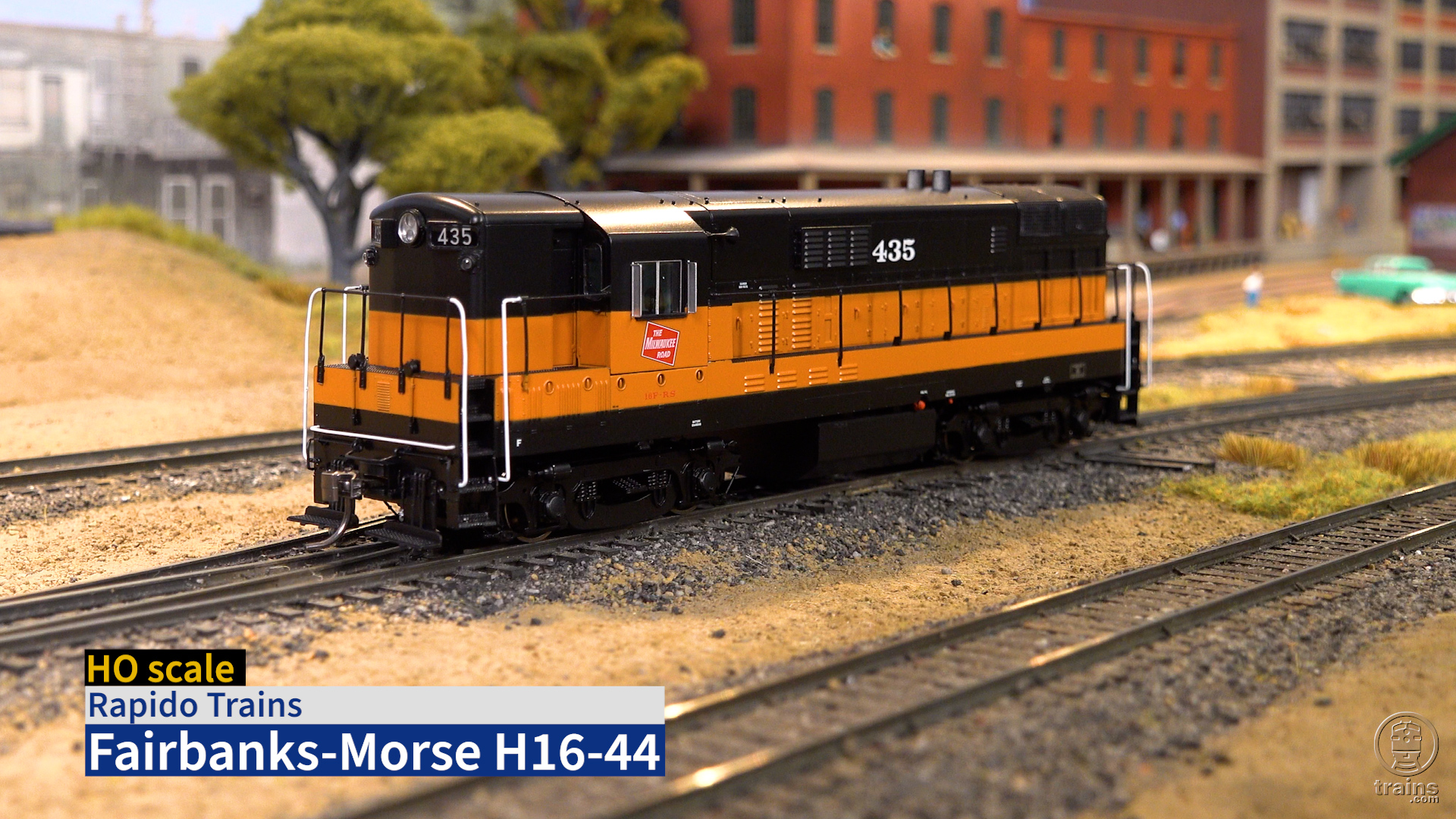To meet strict emissions standards imposed by the Environmental Protection Agency in 2005, General Motors Electro-Motive Division designed the SD70ACe, which EMD based on its earlier SD70MAC. The biggest improvement in the SD70ACe is its 16-710G3C-2 4,300-hp diesel engine that delivers 10 percent more horsepower with 50 percent fewer emissions.
For more information see in the November 2004 Model Railroader. The Athearn SD70ACe’s dimensions match the drawing in that article. Athearn also makes an SD70M-2.
The model. Our review samples came in BNSF, Kansas City Southern, and Union Pacific liveries. We tested BNSF no. 9210. The prototype was part of an order for 200 SD70ACes delivered in 2008. The model’s paint scheme and the placement of lettering and warning stencils match prototype photos.
After removing the front and rear coupler boxes, I removed two screws at each end of the fuel tank. I could then lift off the body shell.
The SoundTraxx Tsunami DCC decoder is mounted on a plastic base that fits over the motor. A speaker rests vertically in its housing just behind the cab.
I tested the model in DCC with a Model Rectifier Corp. Prodigy Advance system. The model moved smoothly throughout its speed range, accelerating to 73 scale mph, which is close to the prototype’s top speed.
When I set the decoder to 128 speed steps, the locomotive moved jerkily in speed step 1. I then set the starting voltage (CV2) to a value of 5. The model then crept along smoothly in speed step 1 at just under 2 scale mph.
Using a DCC system, I changed the locomotive’s long address without difficulty. I also set up a consist using two Athearn SD70ACes. The locomotives pulled a train through an 18″ radius curve as well as through turnouts. The sounds and lights remained constant.
Sounds. In DC the sounds and lights came on at 7.5 volts. Most of the sound effects in DC mode are automatic. The bell turns on until the model starts moving and a grade-crossing signal sounds when the direction switch is quickly flipped. These automatic effects can be shut off, but this requires a DCC system to program the decoder.
When used with a DCC system, the decoder features many programmable configuration variables (CVs) that allow you to customize the volume level of individual sound effects. The decoder also has a built-in equalizer. Extensive user manuals are available as free downloads at www.athearn.com.
In DCC you can fine-tune the engine sounds. In automatic notching you can set the decoder to increase and decrease rpms according to the number of speed steps. You can use manual notching by setting CV116 to a value of 0. The decoder in the Athearn model is different than the aftermarket Tsunami, so you’ll need to set CV43 to a value of 8, and CV44 to a value of 32. Then you can use functions 9 and 10 to increase and decrease the rpms independently from the model’s speed.
Other user-triggered functions in DCC include the bell and long and short whistle blasts. You can also turn the non-flashing ditch lights on and off using function 5.
The Tsunami DCC decoder makes this HO diesel sound as good as it looks. The Athearn Genesis SD70ACe is an exceptional model of a modern workhorse.
Manufacturer
Athearn Trains
2883 E. Spring St., Suite 100
Long Beach, CA 90806
www.athearn.com
Era: 2005 to present
Road names (multiple road numbers): BNSF, Kansas City Southern, Union Pacific (flag scheme). Union Pacific Heritage schemes: Missouri Pacific, Western Pacific. Undecorated versions (BNSF, KCS, and UP) are available.
Features
- All-wheel drive and electrical pickup
- DCC socket accepts eight- or nine-pin decoder
- Dual-mode SoundTraxx Tsunami DCC sound decoder (DCC version only)
- Five-pole skew-wound motor with brass flywheels
- Metal wheels in gauge
- McHenry scale operating knuckle couplers at correct height
- Weight: 1 pound 11⁄2 ounces





